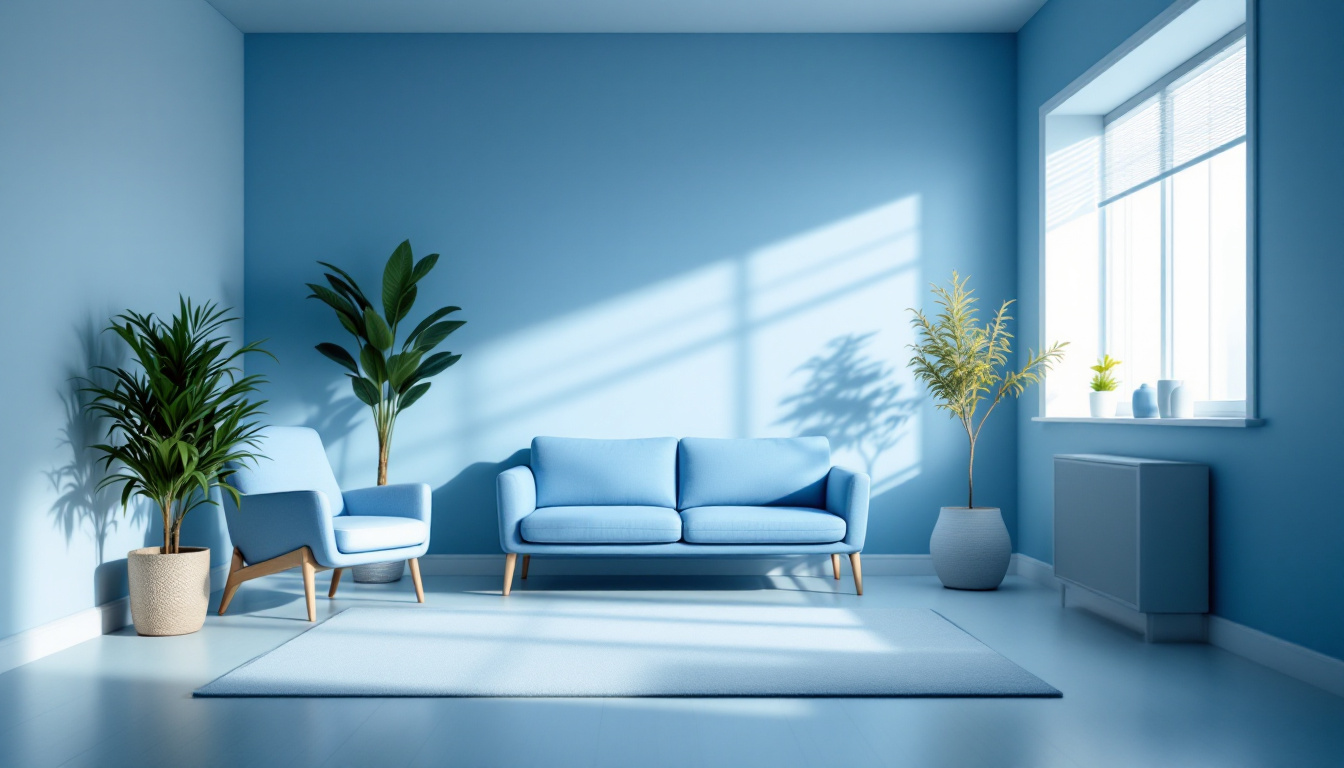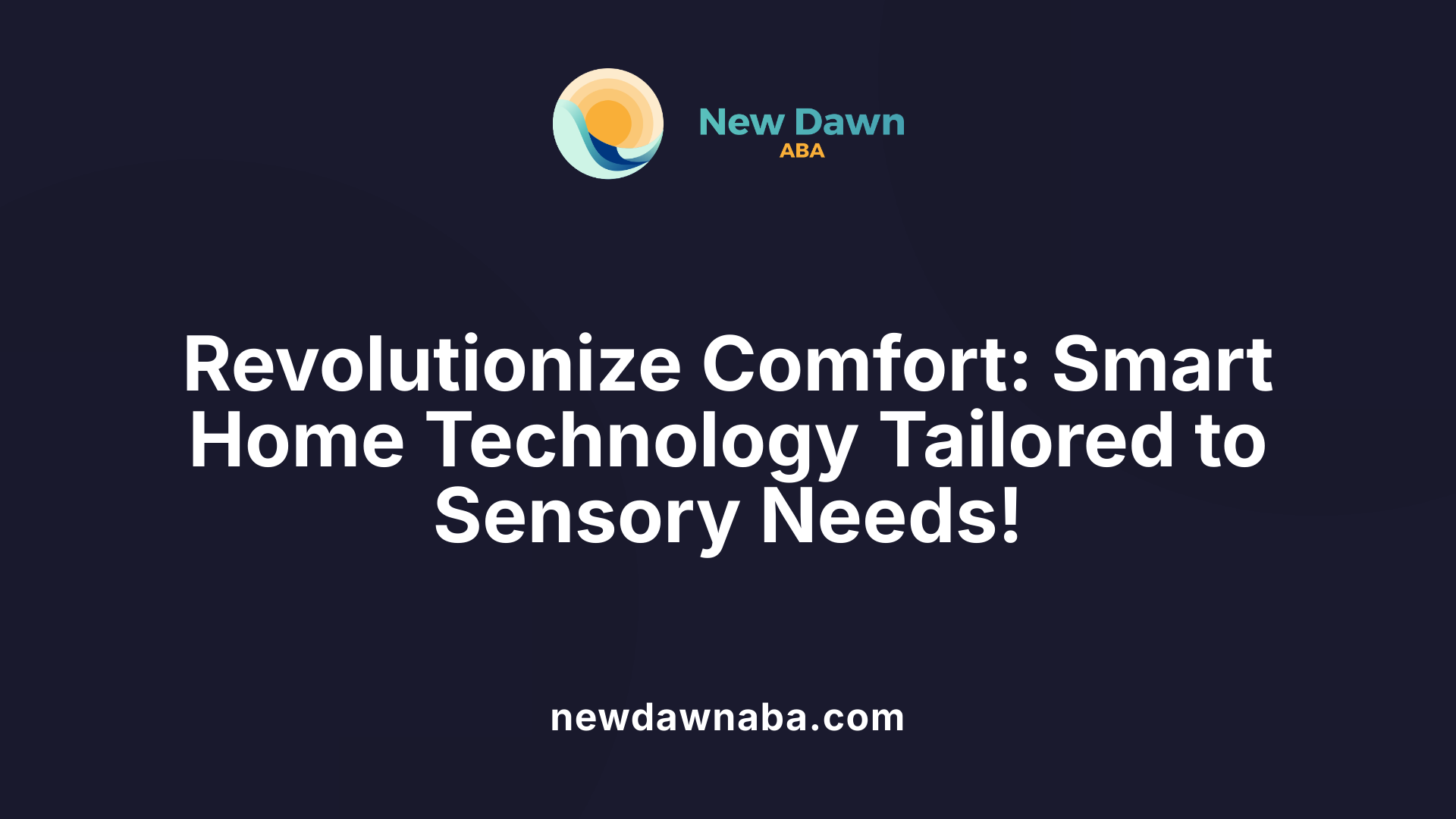Autism and Energy-Efficient Smart Lighting
Illuminating Smart Choices for Autism-Friendly Spaces

Introduction
As we progress into a world where technology caters to individual needs, a focus on autism-friendly environments comes to the forefront, particularly through the use of energy-efficient smart lighting systems. These lighting solutions not only transform spaces to be more accommodating for those with Autism Spectrum Disorder (ASD) but also enhance well-being by addressing critical issues such as light sensitivity and disrupted sleep patterns. In this exploration, we delve into the ways smart lighting technology is reshaping comfort and therapeutic support for individuals with autism.
Benefits of Energy-Efficient Smart Lighting for Autism

What are the benefits of energy-efficient smart lighting for individuals with autism, especially those with light sensitivity?
Energy-efficient smart lighting offers numerous benefits for individuals with autism, particularly those with light sensitivity. One significant advantage is the ability to adjust brightness and color temperatures. This feature enables caregivers to create a comfortable and calming environment, alleviating stress and reducing anxiety levels in autistic individuals.
For instance, studies have demonstrated that classrooms equipped with adjustable LED lighting experience improvements in student engagement. This is particularly valuable for autistic students, as tailored lighting can aid in transitions and enhance focus during learning activities.
Flicker-free and low-glare advantages
Additionally, LED lights are designed to be flicker-free and low-glare, making them a preferred choice over traditional fluorescent lighting. Flicker can be especially distressing for individuals with autism, leading to discomfort and agitation. By utilizing energy-efficient LED systems that minimize flicker, caregivers can significantly enhance the quality of the environment, making it more conducive to daily living.
Improving sensory-friendly spaces
Overall, smart lighting enhances sensory-friendly spaces by allowing individuals to personalize their lighting conditions. This flexibility not only promotes well-being but also supports improved daily routines and behavioral patterns. The adaptability of such lighting systems can lead to a more peaceful and manageable atmosphere, ultimately contributing to a positive living experience for individuals with autism.
Circadian Lighting for Improved Routines and Sleep

Impact of circadian lighting on daily routines
Circadian lighting systems play a crucial role in helping children with Autism Spectrum Disorder (ASD) establish healthier daily routines. By mimicking natural daylight patterns, these systems help regulate sleep-wake cycles, which are often disrupted in children with autism. In a notable project that involved 36 families, the introduction of circadian lighting led to significant improvements in daily behaviors and routines.
Families reported that these lighting systems made transitions between different activities smoother, which is particularly beneficial for children with ASD. The calming effects of specific light colors, such as blue, facilitate relaxation in the evenings, making it easier for children to wind down before bedtime. An impressive 77% of participants characterized the lighting’s impact as 'high' to 'life-changing'.
Improvement in sleep quality
Insufficient sleep is a common issue for 50-80% of children with ASD, often exacerbated by sensitivity to light and challenges with melatonin production. Circadian lighting can alleviate these issues by syncing with the natural rhythm of light and dark, thus enhancing sleep quality.
Studies show that integrating these lighting systems helps children not only achieve longer sleep durations but also improves cognitive function during the day. By promoting a soothing environment through controlled light intensity and color, smart lighting solutions create a backdrop conducive to better rest and overall well-being. Families involved in the Autism Spectrum Disorder Residential Lighting Project demonstrated marked improvements in both sleep quality and daily functioning since adopting circadian lighting.
Lighting Types and Their Impact on Autism
How do different lighting types, like LEDs and fluorescent lights, affect individuals with autism and how can they create a supportive environment?
Different lighting types play a critical role in shaping the environment for individuals with autism. LED lights, known for their energy efficiency, can emit a wide spectrum of colors and adjust their intensity. This flexibility allows for a calming atmosphere tailored to the sensory preferences of individuals on the spectrum.
In contrast, fluorescent lights can often be problematic. They tend to flicker, which may go unnoticed by some but can be particularly distressing for those with autism, leading to discomfort, increased anxiety, and overstimulation. Additionally, the harsh glare from these lights can exacerbate sensitivity issues.
Natural light is another element to consider. Exposure to daylight patterns helps regulate circadian rhythms, a crucial factor for individuals who might experience disrupted sleep-wake cycles. By embracing a variety of lighting options, including dimmable smart bulbs, caregivers can create soothing environments that foster stability, comfort, and improved behavioral outcomes.
| Lighting Type | Benefits | Drawbacks |
|---|---|---|
| LED | Energy-efficient, versatile colors, and dimmable options | Requires initial investment |
| Fluorescent | Quick to install, widely available | Flicker, harsh brightness |
| Natural Light | Regulates circadian rhythm | Limited control in certain spaces |
By incorporating these lighting considerations, families and caregivers can significantly enhance daily living experiences, promoting better sleep and more positive behaviors for individuals with autism.
Innovative Features of Autism-Specific Smart Lighting

What are the features and emotional benefits of energy-efficient smart lighting products designed for individuals with autism?
Energy-efficient smart lighting products designed for individuals with autism incorporate customizable settings that greatly enhance comfort and reduce sensory overload. These features include adjustable color options and dimmable controls, helping to create a soothing atmosphere in various environments.
Many individuals on the autism spectrum have heightened sensitivity to certain types of lighting, particularly fluorescent bulbs, which can lead to irritability and anxiety. LEDs offer a compelling alternative, as their tunable brightness and color temperature allow users to select warmer light settings (ranging from 2200K to 3000K) that promote tranquility and concentration.
Smart lighting systems also enable precise control over light intensity and timing, mimicking natural daylight patterns. This regulation can positively impact sleep-wake cycles, which are often disrupted for individuals with autism. Furthermore, these lighting solutions have been shown to enhance emotional well-being and boost engagement levels in educational settings, where optimized lighting can lead to greater participation in activities.
By providing a sense of comfort and control, innovative lighting technologies significantly improve the daily lives of those with autism. The emotional and sensory benefits make these systems not just practical but vital for creating supportive environments.
Therapeutic Applications of Smart Lighting

Therapeutic impacts of lighting on autism
Lighting plays a crucial role in the daily lives of individuals with Autism Spectrum Disorder (ASD). Traditional lighting can cause discomfort and overstimulation, making thoughtful lighting solutions essential.
Circadian Lighting Systems
These advanced lighting systems imitate outdoor daylight patterns. This mimicry can enhance alertness during the day and create a calming environment in the evening, helping individuals unwind. Such systems were notably implemented in the Autism Spectrum Disorder Residential Lighting Project, where 36 families reported significant improvements in daily routines and sleep patterns.
- Improvements Observed
- Better Sleep: Families traced better sleep habits directly to the new lighting.
- High Impact: A stunning 77% of families rated the lighting's effect on their lives as 'high impact' or 'life-changing.'
Energy efficiency of therapeutic lighting
The integration of energy-efficient technologies in environments supporting individuals with autism is vital for sustainability.
Energy-Efficient Technologies
For instance, the Pacific Autism Family Centre uses smart lighting systems extensively. This includes:
- LEDs
- Energy-efficient with extensive color range, providing flexibility in ambiance.
- Dimmable Smart Bulbs
- These create a soothing atmosphere, beneficial for sensory sensitivities.
- Hydronic Heating and Cooling
- Save approximately 381,000 kilowatt-hours annually, improving comfort without excessive noise.
By embracing these innovations, therapeutic lighting solutions not only alleviate sensory overstimulation but also contribute to energy conservation, resulting in environments that are both comfortable and sustainable.
Smart Home Technology Adapting to Sensory Needs

How can smart home technology enhance comfort and adapt to the sensory needs of individuals with autism through lighting adjustments?
Smart home technology offers exciting advancements for enhancing comfort and adaptability for individuals with autism. One of the most significant features is the ability to precisely adjust lighting conditions tailored specifically to sensory needs. Many individuals on the autism spectrum experience discomfort from harsh, fluorescent lighting, which can trigger sensory overload.
Adjustable LED lighting is transforming environments by minimizing flicker and glare. This creates a calming atmosphere, which is essential for reducing anxiety and improving focus. Research indicates that using warmer lighting tones can be especially soothing, while dimmable options can mimic natural light cycles, contributing to a sense of safety and relaxation in their surroundings.
Implementing smart bulbs, equipped with control over brightness and color temperature, allows caregivers and individuals to easily manage their sensory environment. This customized control leads to significant improvements in daily routines and behaviors, underscoring the importance of lighting in enhancing the quality of life for individuals with autism.
| Feature | Benefit | Importance for Autism |
|---|---|---|
| Adjustable LED | Reduces flicker and glare | Minimizes sensory overload |
| Warmer tones | Creates a soothing atmosphere | Enhances comfort |
| Dimmable options | Mimics natural light cycles | Regulates sleep-wake cycles |
| Smart bulb control | Allows personalized adjustments | Empowers individual comfort experience |
By utilizing smart lighting integrated with broader smart home systems, families can provide environments that cater effectively to the unique sensory needs of their loved ones.
Conclusion
In conclusion, energy-efficient smart lighting systems serve as a powerful tool in creating autism-friendly environments by offering adaptive, therapeutic, and accommodating solutions that address sensory sensitivities and aid in daily routines. From supporting sleep patterns through circadian lighting to providing a customizable and soothing ambiance, these systems play a significant role in enhancing overall well-being for individuals with autism. As technology advances, further opportunities emerge for parents and caregivers to integrate these lighting solutions into their homes, promoting healthier and more comfortable living spaces that adapt to every individual's unique needs.
References
- [PDF] Autism Spectrum Disorder Residential Lighting Project - SMUD
- Autism centre designed to limit noise, energy use - BC Hydro
- How Smart Home Technology Can Support Sensory Needs For Autism
- Lighting and Autism: How Fluorescent & LED Affects Sensory
- A case study on the effect of light and colors in the built environment ...
- How Light Can Help Autistic Children
- Autism-Friendly Lighting: Sensory Lights for Light Sensitivity - Covey
- Autism and Classroom Lighting | Make Great Light
- Autism-Friendly Lighting: Sensory Lights for Light Sensitivity - Covey






